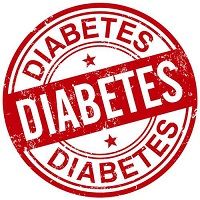Article
Sitagliptin Safe Option in Diabetic Patients Admitted to Hospital?
Author(s):
Sitagliptin tablets proved more convenient and equally safe and effective as insulin injections in achieving glycemic control for people with diabetes admitted to hospitals for medical care or surgery, a five-center study found.

Diabetics tend to spend more time in the hospital than people without the condition. Once admitted, their diabetes puts them at increased risk of in-hospital complications.
Good glycemic control means these patients are less likely to develop nosocomial infections or surgical wound infections.
In a new study in The Lancet, researchers report on a multi-center trial of sitagliptin (Januvia/Merck) in managing these patients when they are admitted to in patient care either for general medical problems or surgery. They wanted to see if the more convenient sitagliptin tablets would be just as good as insulin, which is injected and more complicated and labor-intensive to deliver.
Sitagliptin works because it inhibits dipeptidyl peptidase IV (DPP-IV) and that results in prolonged active incretin levels.
These hormones regulate glucose homeostasis. They increase insulin synthesis and decrease glucagon secretion from pancreatic alpha cells.
In healthy people, incretin hormones are released by the intestine all day and levels increase after eating.
Incretin hormones are rapidly inactivated by the DPP-IV enzyme.
In The Lancet study, researchers compared the safety and efficacy of sitagliptin plus basal insulin with basal-bolus insulin regimen for these hospitalized patients.
The study was done at five US centers.
It was a prospective, open-label, non-inferiority trial.
The patients were being treated with diet or oral antidiabetic drugs or had a total daily insulin doses of 0-to-6 units per kg or less.
There were randomly assigned to receive either Sitagliptin plus basal glargine once daily or a basal-bolus regimen with glargine once daily and rapid-acting insulin before meals.
All other antidiabetic drugs were discontinued on admission.
In all, 277 patients were assigned to the two treatment groups.
“The mean daily blood glucose concentration in the sitagliptin-basal group was not inferior to that in the basal-bolus group, with the first having levels of 9-5 mmol/l and the second 9.4 mmol/l," the team reported.
Treatment failure occurred at similar rates as did hypoglycemia and acute kidney injury (5% in the sitagliptin group and 4% in the basal bolus group).
The conclusion was that “treatment with sitagliptin plus basal insulin is as effective and safe as, and a convenient alternative to, the labor-intensive basal-bolus insulin regimen, lead investigator Prof. Guillermo Umpierrez, Emory University School of Medicine, Atlanta, GA, and colleagues wrote in the article.
It is entitled “Efficacy of Sitagliptin for the Hospital Management of general medicine and surgery patients with type 2 diabetes (Sita-Hospital) and was published December 7. The Lancet also published an editorial comment on the study.
The research was funded by Merck.
Related Coverage:




